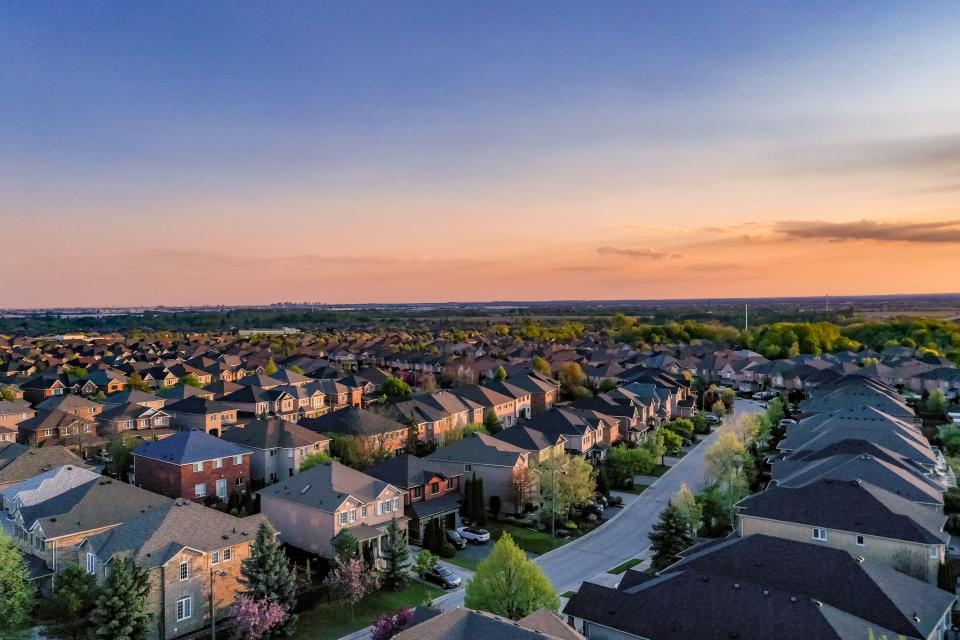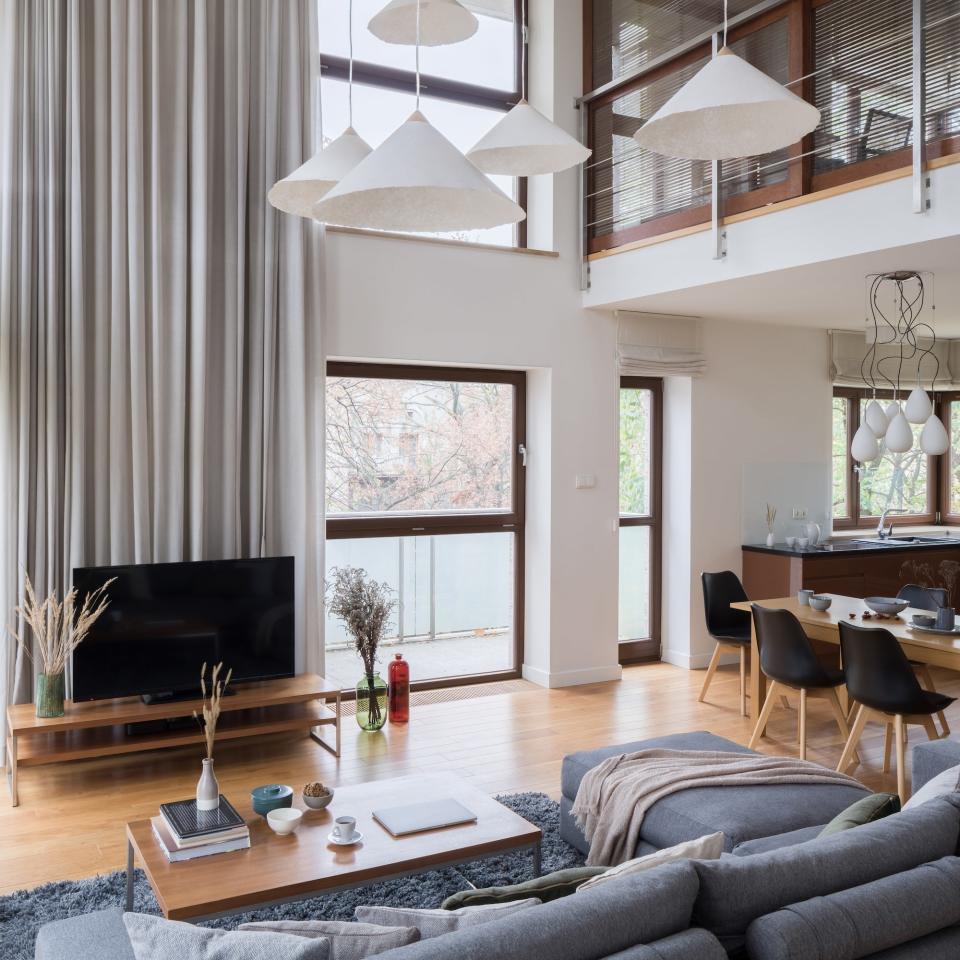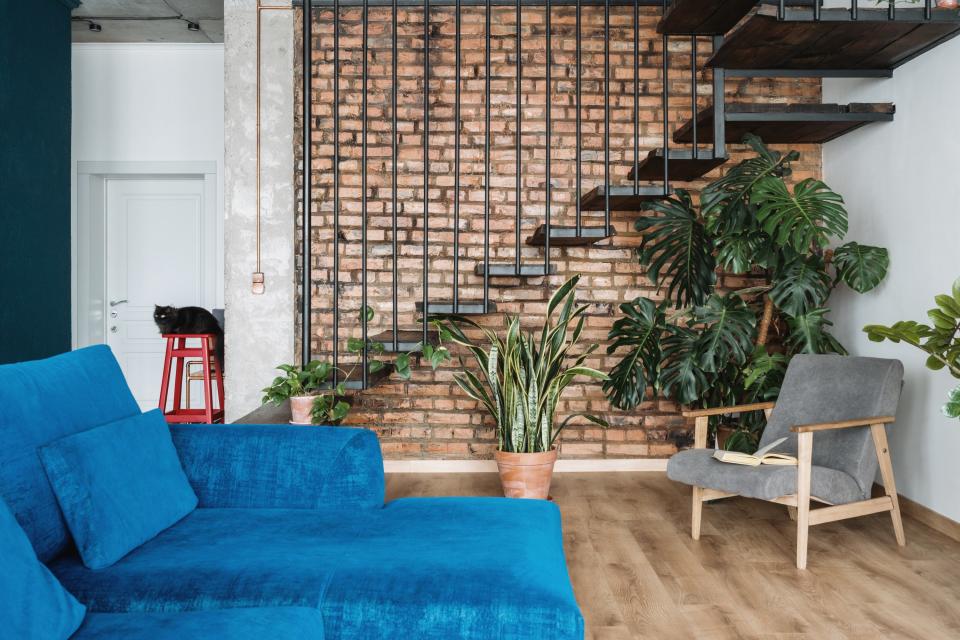What Is a Duplex? (Short Answer: It’s Much More Than Meets the Eye)

Photo: Getty Images/Jeremy Poland
If you’ve ever wondered, What is a duplex? You’re not alone. Whether you’re a renter or a homeowner, duplex living can provide the best of both worlds between living in a single-family home and a big apartment building. The cost is often lower than living in a single-family home, but in many cases, you can still enjoy many of the benefits associated with single-family homes, like parking and backyard space. Read on for details on the history of duplexes, the most common layouts for the structures, and the pros and cons for owner-occupiers, renters, and investors. We’ll also take a look at duplex apartments, which are common in large cities across the country, but offer a completely different living arrangement than duplex homes.
What is a duplex?

Aerial view of Residential Distratic at Major MacKenzie Dr. and Islinton Ave., detached and duplex house at Woodbridge and Kleinburg, Vaughan, Canada
Photo: Getty ImagesSimply put, a duplex is a home with two dwelling units within one structure. These dwellings can be arranged in a variety of ways. One configuration places the units side by side, splitting the structure up from top to bottom. Another configuration divides the duplex house into a back unit and front unit. Yet another configuration divides the two-story home into an upstairs unit and a downstairs unit.
"The most popular kind [of duplex] in America is the one over one,” says Thomas Hubka, an architectural historian whose research on duplexes is included in his book How the Working Class Home Became Modern, 1900–1940. “[In a one over one], there’s one unit on the ground floor and on the second floor is an identical unit."
Compared to town houses, which often have a shared wall with a dwelling on either side, duplexes share just one common wall, or in the case of the one over one, only the floor/ceiling are shared between the duplex units.
History of duplexes
The two-unit structures have a long history in the United States. "Duplexes were built continuously before the revolution in the East Coast colonies," says Hubka, meaning duplexes even predate American independence. As Hubka explains in his book, How the Working Class Home Became Modern, the structures have gone by a variety of names throughout time, but “duplex” has been the most common since the late 19th century.
Duplex production was particularly high in the early 20th century. “In the ’20s, the duplex and other multi-unit housing were starting to approach the production numbers of single-family housing,” Hubka explains. "All of a sudden, the New Deal policies supported single-family housing, knocking back multi and duplex construction. So we were heading for an America with multifamily housing and single-family as the common standards for everyone and then it all changed after World War II.”
Pros and cons of duplexes
For homeowners that intend to personally live in their duplex, the most obvious advantage of duplexes over single-family homes is the ability to earn a rental income off of the other half of the structure. Compared to renting out a room within your own living space to help cover costs, renting out the other half of a duplex allows for more privacy between the owner and renter.

Elegant and spacious two-floor apartment
Photo: Getty Images/Dariusz JarzabekWhile owning a duplex can be an exciting prospect for first time home buyers who would otherwise worry that the costs of home ownership are unmanageable in today’s housing market, the demands of becoming a landlord must be considered before buying a duplex. Maintaining a rental property is a serious commitment, especially as there may be months where the property sits empty without generating any income.
For those looking for a real estate investment property—not a space to live in themselves—the duplex has its own set of pros, too. “In comparison to single-family homes, town homes and condos, you get two rental incomes instead of one,” says realtor Jason Reed, whose real estate team the Duplex Doctors specializes in multi-family homes, including duplexes and triplexes. “Duplexes are often the same cost as a home which has slightly higher rent than the duplex, but the two units will pay considerably more than the one home rent.”
In his work as a real estate agent, Reed has observed that renters themselves tend to favor living in a duplex over a unit in an apartment building, too. “I have found that tenants feel better about living in a building that only has one other set of tenants to contend with,” Reed says. “The yard and or a deck are big pluses for tenants, especially ones that have pets.”
Duplex apartments
Complicating the definition of “duplex,” in large cities like New York, the word is also used to describe an apartment that spreads across two floors, connected by a staircase within the unit itself. While duplex homes are often an affordable housing option, duplex apartments tend to be in luxury condominiums or co-ops and offer a step up from a typical apartment unit.
Architect Esther Sperber of Studio ST Architects has worked on many duplex conversions, crafting a two story unit out of what was once two separate single-floor apartments. “I really like duplex apartments in the city because they can give a sense of privacy and space beyond their actual size,” says Sperber, who lives in a duplex apartment herself. “The separation of the more public living space from the private bedrooms gives us a sense of privacy and makes the apartment feel larger.” In addition to the extra space and privacy, the addition of a stairway offers “an architectural opportunity to create a sculptural design element,” as Sperber puts it, and the potential for extra hidden storage underneath the staircase.

Upholstered furniture in luxury loft duplex flat
Photo: Getty Images/Oleksandr KondriianenkoWhile Sperber says there’s no minimum size requirement for duplex apartment conversions, she’d recommend combining two apartments when each individual unit is at least 700 square feet, since the addition of the staircase can eat up space and present a challenge in smaller apartments.
Frequently asked questions
Are duplexes cheaper than other homes?
In terms of the actual listing price of the home, duplexes are not necessarily cheaper than other homes, though this varies across the country. What makes duplexes more affordable is that an owner-occupier can rent out the second unit and put the money earned off of that unit toward mortgage payments and other costs, thereby reducing the overall expense of owning a home.
What is the difference between duplex and semi-detached homes?
A semi-detached home is similar to a duplex in that it shares a wall with another home. The difference is that semi-detached homes are generally owned individually, rather than both halves being held by one homeowner, as is the case for duplexes.
Originally Appeared on Architectural Digest

